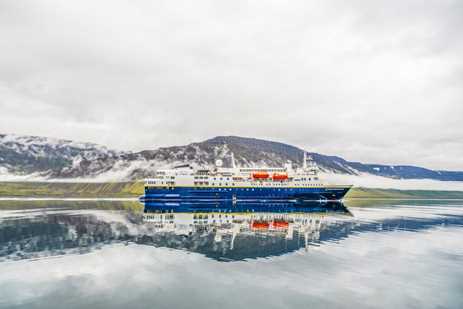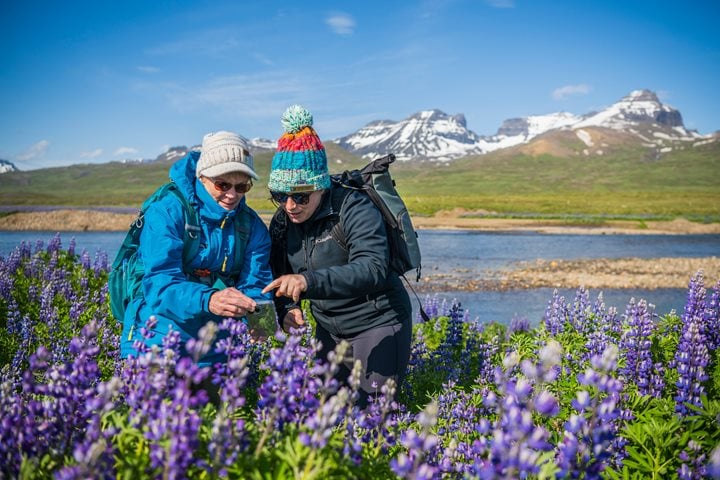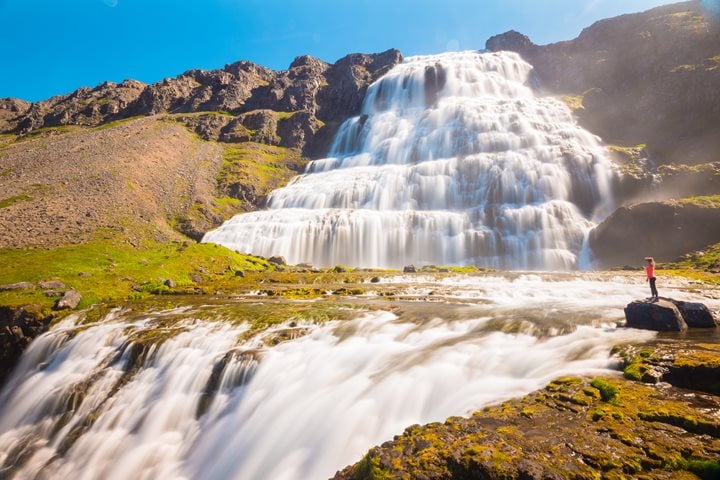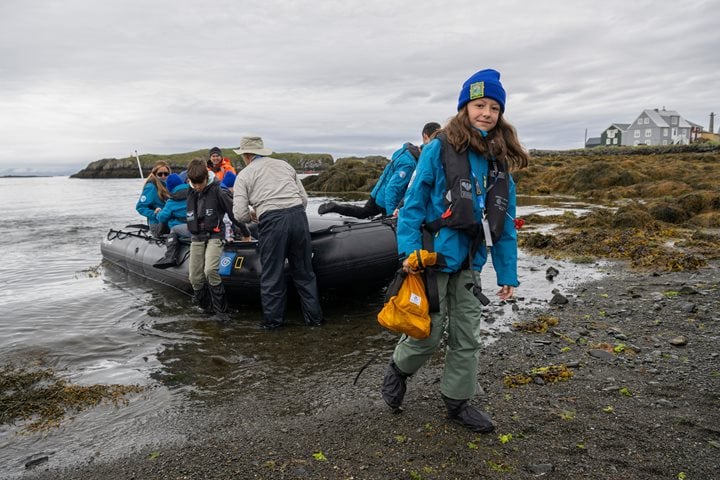After falling in love with Vigur Island while bringing travelers there on expedition eight years ago, renowned polar explorer Felicity Aston decided to buy it. Today, she and her husband oversee the annual eiderdown harvesting which Vigur is known for, as well as its charming cafe where you can enjoy a slice of traditional Icelandic rhubarb cake known as Hjónabandssæla. In this episode of Expedition Spotlight, Aston welcomes you to her home, a tiny Icelandic haven for thousands of puffins, arctic terns, and eider ducks.
Expedition Spotlight: Welcome to Vigur Island
Featured Itineraries
Video Transcript
Felicity Aston, polar explorer and co-owner of Vigur Island: My name's Felicity Aston. I'm a polar explorer, I'm one of the owners of Vigur Island, and one of its three permanent inhabitants. Lindblad is here on the National Geographic Explorer.
Title: Expedition Spotlight: Welcome to Vigur Island
Where is Vigur Island?
We are on Vigur Island, which is a tiny little island in the very northwest of Iceland in the Westfjords region. It's right in the middle of a huge fjord called Ísafjarðardjúp.
I've been leading expeditions in the Arctic and Antarctic for more than 25 years now. But about eight years ago, I came to Vigur for the first time bringing guests here as a guide, and I loved the place. I heard that the island was for sale. Me and my husband, we had an opportunity to buy the island, and so here we are. Now Vigur Farmers is what we are called.
We bring the passengers to the historic houses and tell them a little bit about the history of this place.
We have our own well here. There are six freshwater springs on the island.
And we also introduce them to the centuries old Icelandic tradition that we keep alive here of collecting the down from the common eider duck. Then we go for a walk around the island to get up close and personal with some of the wonderful bird colonies.
But then finally, we leave people in our cafe where we serve them some of our homemade, traditional Icelandic rhubarb cake made with the rhubarb that we grow right here on the island.
The Natural Landscape and Birdlife on Vigur Island
The early settlers wanted to come here to Vigur because it's covered in this beautiful, lush grass, and that's really unusual for this Fjordland region. The grass was important to the settlers cause it meant they could have grazing livestock.
The reason the grass is here is because of the birds. The birds provide ample fertilizer for this island. Over one ton of "fertilizer" falls on this island per day during the season, just from puffins. We have a hundred thousand puffins on the island. We are also the largest colony of breeding black guillemots in northern Europe.
The Arctic terns, in Icelandic, they're called Kría for the noise that they make. And you hear a lot of that if you come and visit us on Vigur, especially in the month of July, which is when all their eggs are hatching out and it's covered in lots of tiny, little, fluffy Arctic tern chicks, which are super cute.
But their parents are ferocious in the protection of that colony. We advise all our guests when we are walking near Arctic tern colonies to carry a stick, and the stick is not for swiping or striking or anything. It's just for carrying above your head so that the tern will go for the top of the stick rather than the top of your head.
When they leave us here, they fly all the way to Antarctica, spend the Antarctic summer in Antarctica, and then fly all the way back to us here in the Arctic, and they always arrive on the 10th of May. They are never late. It's really extraordinary.
We have about 10,000 eider ducks that swarm around the shores of Vigur from about May onwards. The reason we get such a concentration of eider ducks is because they feel safe here. We have no natural land predators, no Arctic foxes, no mink, so the only predators are from the air. Things like gulls, ravens, falcons, and eagles, and those birds don't like to be around people. So, whereas normally in the natural world, wildlife feels safest when it's furthest away from human beings, here on Vigur, they're safest when they're as close as possible to human beings.
The bird life on Vigur is hugely important, not just to the physical side of the island, but its emotional heart too. You know, what would this place be without the birds?
People tell us that their visit to Vigur has been the highlight of their Circumnavigation of Iceland, and I can understand why. It's a very rare opportunity to get to see such a concentration of birdlife as we have here on Vigur.





